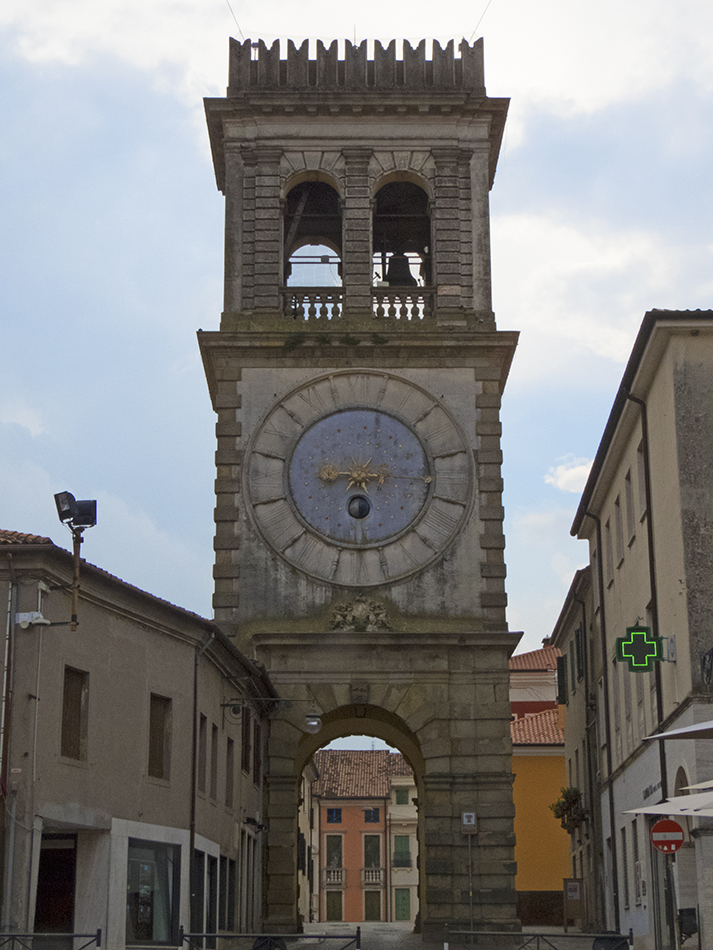
Although time and its measurement is a fundamental component of human life, a special type of clock which takes matters to the next level is the so-called
astronomical clock and whose purpose is not to measure time per se but to convey astronomical information and, in particular, the relative position of the
Sun and Moon as well as the zodiacal constellations and, in some cases, the position of the planets all as a function of time.
The oldest such effort to effectively emulate the overhead celestial sphere (ie a mini-planetarium) is the
Antikythera Mechanism which was discovered in 1901 totally by
accident by sponge divers off the coast of the Greek island of Antikythera. It has been dated to approximately 80 BC and it is believed to be the work of
Poseidonius of Rhodes. The Antikythera Mechanism is currently on display
at the National Archaeological Museum in Athens, Greece.
Note: Although Este is a small town south of Padova with less than 20,000 inhabitants, its history dates back to well over two
millenia. The town is fortified by a one-km wall that surrounds the city and which was built for defensive purposes. This wall included twelve towers as
well as an old brick entrance gate which was severely damaged by an earthquake in 1688. For the purposes of public safey, the tower was demolished and a
new (single-arch) tower erected in its place in 1690 which measured approximately 20 meters in height. The tower is comprised of three rooms including a
room for the gatekeeper at the time who closed the gate at night and which was later converted to accommodation for the horologist responsible for managing
the clock. The second room now acts as a small museum whereas the third room is the belfry with the large broze clock originally constructed in 1637.
The astronomical clock is relatively simple in design. It boasts a 12-hr clock with roman numerals and a gold lever with the Sun at its axis of rotation and
the Moon at one end with an arrowhead indicating the time of day cast against a light blue background sky with stars at the other. Immediately below the
gold lever is a small sphere encapsulating the Moon and its phases. Of particular interest is the engraving at the four o'clock position and where "IIII"
is used in lieu of the more orthodox "IV". Finally, close inspection of the gold lever indicating the time of day is a figurine of a man carrying a castle
on his shoulders and which suggests some sort of analogy to Atlas from Greek mythology and who carried the world on his shoulders.
Note: For a view of the astronomical clock using much greater focal length, please click
here and
here.
Note: For additional results involving astronomical clocks from around the world, please click
here.
|
Body: Sun Mass: 332,900 x Earth Mass Eq Diameter: 109.1 x Earth Distance: 149 million km RA / Dec: 23h 41m 41s / +89° 19' 51" Diameter: 32.16' Magnitude: -26.8 |
 |
Date: Sept 14, 2023 Location: Porta Vecchia, Este, Italy Equipment: Canon PowerShot SX60 HS @ 11.10 mm / f8.0 Exposure: 1 x 1/1250 sec ISO 400 RAW Image Format 4768x3516 Image Size Continuous Servo Mode Manual Mode Software: Photoshop CS6 Processing: Brightness/Contrast Resampling JPG Compression |